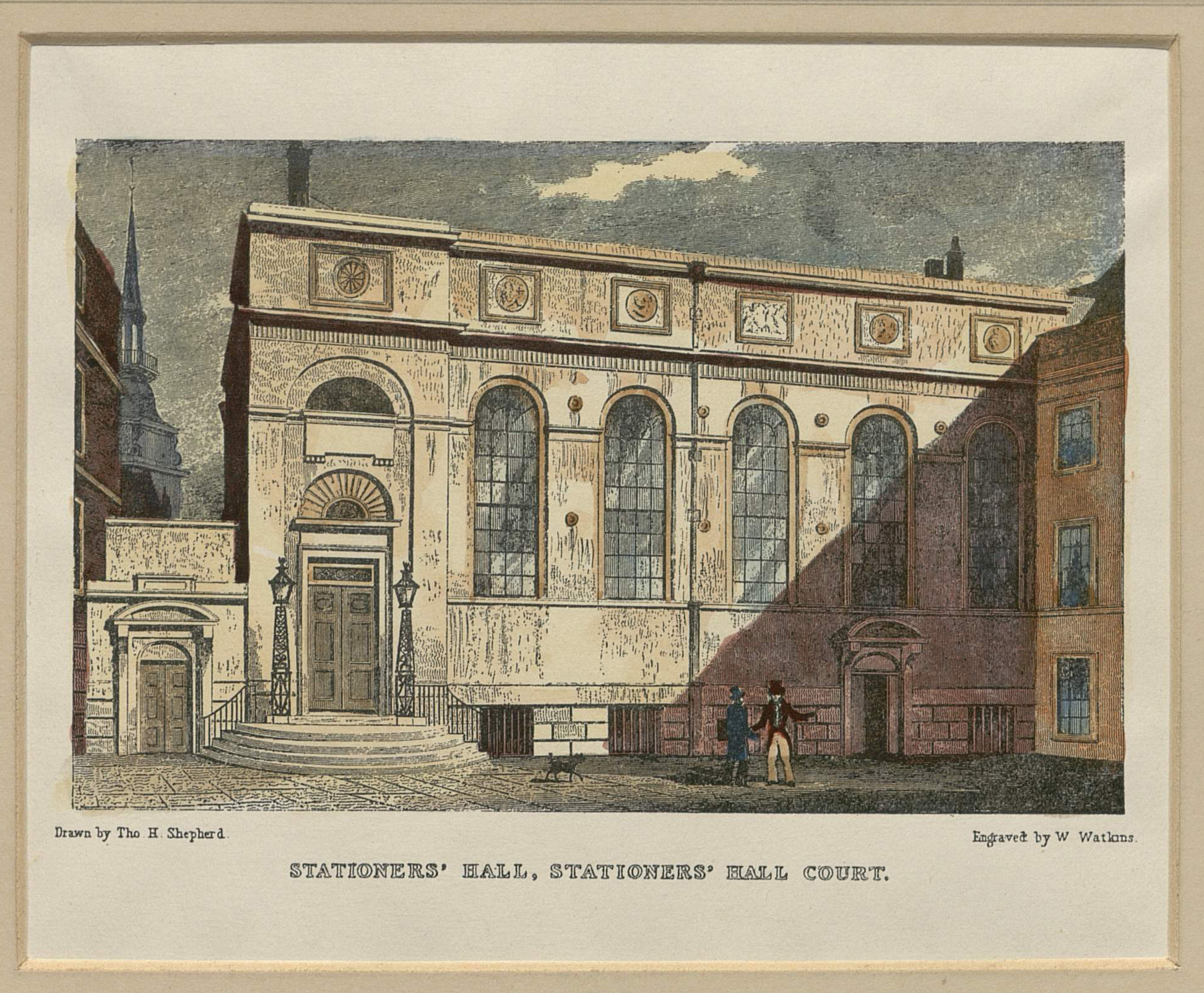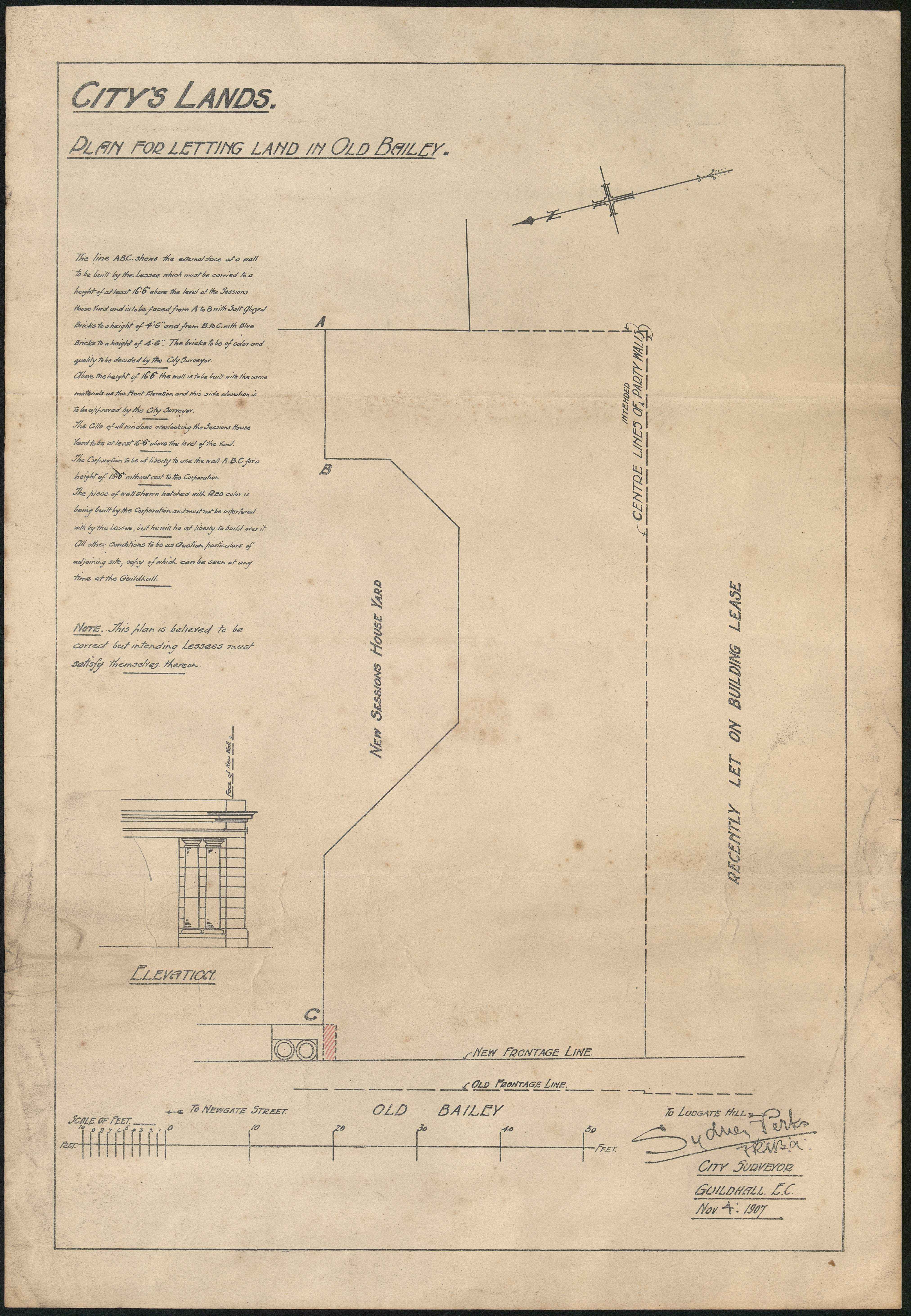Nature and Scope
Explore this unique archive relating to the history of printing, publishing and bookselling dating from 1554 to the twentieth century.
Nature of the Material
Introduction
Sourced from the archive of The Worshipful Company of Stationers & Newspaper Makers, located at Stationers’ Hall in the City of London, this resource allows access to a vast and unique collection of primary source documents. The collection is widely regarded as one of the most important primary sources for studying the history of the book as well as publishing history, the history of copyright and the workings of an early London Livery Company. Explore the variety of documents to uncover the story of the role the Stationers’ Company played in the history of the book trade.
To find out more about the history and origins of the Stationers’ Company you can read the online exhibition Introducing the Stationers’ Company and watch the introductory Stationers' Company video.
Collection highlights include:
- The Entry Book of Copies (1554-1842) were used to establish copyright belonging to publishers, booksellers and eventually authors until the introduction of automatic copyright in 1912. After the first Copyright Act in 1709 the registers became the official record of copyright and legal deposit and shed light on the origins of publishing in early modern England. Discover significant entries within the registers such as the entry for Shakespeare’s First Folio, included on page 69 of Liber D November 8th, 1623. The registers have also become one of the most essential documentary records in the later study of English Renaissance theatre. The Entry Book of Copies are enhanced with Handwritten Text Recognition (HTR) technology to enable full-text searching of the manuscript material.
- The Membership Records (1555-1940) provide valuable biographical information on the printing and publishing community and members of the Stationers’ Company. Use key documents such as Livery lists and Apprentice registers to trace membership within the Stationers’ Company.
- The Court Records (1602-1982) are an essential source for understanding the workings of the Stationers’ Company and for dating texts or tracing editions and can be used alongside the Entry Book of Copies. The Court Records also contain information about bindings of apprentices, charitable donations and affairs of the English Stock. Use the theme ‘Orders of Court’ for further research within the Court Records.
- The English Stock documents (1603-1961) record the activities of the successful publishing arm of the Stationers’ Company. The English Stock Company traded from Stationers’ Hall in books written in English and held a monopoly for many years over popular and frequently re-published works. Patented publications included almanacs, psalters, primers and some school books. The records provide an insight into the patent system, the Company’s control of patents and the tensions this created within the printing trade.
- The Treasurers’ vouchers (1734-1800) detail English Stock payments for printing, paper and advertising almanacs and other English Stock books. The vouchers include notes concerning agreements with Cambridge University and convictions for the sale of unstamped almanacs.
- Supporting the primary source documents is a Photograph Collection which includes black and white and colour photographs of members and events at Stationers’ Hall, including visits from Queen Elizabeth II.
Key themes covered include:
- History of the Book Trade: The remarkable history of the book trade is traceable through the Entry Book of Copies and Court Records. The documents can be used by literary scholars and historians as a means of dating Shakespeare, establishing publication dates of plays and ballads, and for tracing the lives of early printers and the establishment of book trade practices.
- Bookselling: Uncover biographical information about the booksellers of London and gain an in insight into the supervision of the book trade. Understand material aspects of book and print culture by viewing documents that discuss wages, working conditions and the fixed retail prices for books.
- Printing and Publishing: The arrival of printing in England in the fifteenth century caused a social and cultural revolution. Use the Entry Book of Copies to research printing in early modern England alongside key documents such as Liber A which records orders relating to printing activity and the appointment of licensers to oversee printing in 1643. Search the Trade Records to uncover documents concerning the right to print and publish works.
- Copyright: The Stationers’ Company was instrumental in establishing legal requirements for the book trade, especially copyright provisions. Control of copyright is one of the most important cultural aspects of the Company’s history. Browse lists of works that were entered for copyright protection in the Entry Book of Copies and research documents in the Trade Records to discover more about the administration surrounding the process of copyright within the Company.
- History of the City of London: Livery Companies were integral to the governance of the City of London. Members of the Stationers’ Company served as Lord Mayor of the City of London and played prominent parts in City events. Research documents relating to voting rights, maintenance, political and legal battles and financial governance of the City. Property deeds can also be accessed to reveal the extensive property the Company has held throughout the years in the City of London.
- Search and Seizure: The original official purpose of the Entry Book of Copies was as an instrument of control over the printing and sale of heretical and seditious works. The Masters and Wardens of the Stationers’ Company had the right to search the businesses and homes of printers, bookbinders and booksellers for illicit presses and pirated works. See financial documents including bills and receipts for searching for illegal presses and legal documents discussing illegal printing and publishing that provide a fascinating insight into the control of the book trade.
Other key themes such as: Charity, Company Employment, Company Finance, Company Rules and Regulations, Events, Feasts and Ceremonies, Membership, Orders of the Court and the Stationers’ Company School reveal information about the day to day running of this unique Company, the social history of early modern London and book and print culture.
For a more detailed insight into the key themes of Literary Print Culture: The Stationers' Company Archive, 1554-2007 read the essays written by academics and collection specialists on the editorial board.
Scope of the Collection
Literary Print Culture: The Stationers' Company Archive, 1554-2007 showcases a diverse range of material from the archive of the Stationers' Company archive including:
- Constitutional Records
- Court Records
- Membership Records
- Financial Records
- Trade Records
- General Administrative Records
- Charities and Property Records
Read the Record Guides for a more detailed explanation of the different record types.
A variety of secondary features provide further tools for teaching and research:
- Contextual essays from leading academics contextualising and exploring the archival material
- Oral History recordings of interviews with prominent former Company members
- Interactive chronology offering contextual information to support the documents
- A Glossary providing a guide to the terminology used with the Stationers’ Company
- Online exhibitions showcasing some of the collection’s highlights
- A full searchable visual highlights gallery featuring photographs and architectural plans
- Carefully selected external links to aid research
Selection criteria 
We have tried to be as comprehensive as possible in our digitisation of the Stationers’ Company Archive, aiming for full runs of series and records whenever feasible.
We have included the majority of material held by the archive within the main record types that fall below the cut-off dates agreed in discussion with staff at the Stationers’ Company Archive. These cut-off dates were largely created to protect the data protection rights of living members of the Stationers’ Company. Copyright restraints also necessitated the omission of a number of items from the latter half of the twentieth century.
The Entry Books of Copies are included in full, as are all records relating to the 300-year history of the Company’s publishing arm, The English Stock (including documents relating to the dissolution of The English Stock).
Given the lengthy time period covered in this resource, and the huge variety in material formats (from tiny slips of paper that make up the Warden’s vouchers in the Financial Records to the oversize vellum deeds found across the records groups), the archive is a complex entity to manage and catalogue. This, added to the fact that the Stationers’ Company is a fully active livery company and thus has a live, growing archive, means that it is unfortunately inevitable that the occasional document may not be present in this digital collection. If you cannot find a particular document within this collection, you can contact the Stationers Company archivist for further information on archivist@stationers.org.
Cut off dates:
- Constitutional Records: 1951
- Court Records: 3 May 1982 (to end of Court book p, TSC/1/B/01/39). Also includes Index to Court books n, o & p (TSC/1/B/06/08).
- Membership Records: 1940
- Financial Records: 1966
- Trade Records: 1961 (Exception: The English Stock – all related material included).
- General Administrative Records: 1984 (Includes the document Photograph album of past Masters)
- Charities and Property Records: 1984


